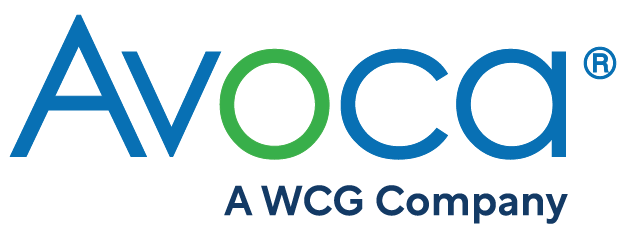“That’s already having a big impact on report respondents,” says Crissy MacDonald, PhD, executive director for client delivery at The Avoca Group. “It’s pretty well known that MHRA is a much more process-oriented regulatory agency, so their focus is on that,” she explains. “FDA is more about documentation.”
Now it appears the two agencies are “sharing their strengths with one another,” and that’s increasing the number of findings each identifies during an inspection. While they aren’t always performing dual inspections, survey respondents reported instances where MHRA would investigate first, then share its results with FDA prior to its separate inspection. In other instances, it’s been FDA going first, as it were, and reporting its findings to MHRA as it waits in the wings to conduct its own work.
According to MacDonald, it’s a situation where having access to study materials for the duration of the trial has some sponsors most befuddled. “The sharing of information is definitely new on the regulatory front. We found an instance where a regulatory inspector basically said he wanted access to a sponsor’s [trial master file (TMF)] during the entire trial. It’s kind of unheard of,” she adds.
Avoca shared some preliminary inspection experiences from data gathering efforts, including:
FDA: Very data driven
- Members consistently comment that the investigators spend a lot of time looking at monitoring information and tracing data from the patient through to the sponsor.
- The investigator looked to see if sponsor and contract research organization (CRO) have job requirements for clinical research associates (CRAs) (e.g., two years of oncology experience), and if so, how the sponsor was checking and how they ensured all CRAs were in compliance with the requirements.
European Medicines Agency and MHRA: More systems focused; request access to TMF; may even conduct virtual inspection
- Five inspectors of a particular hybrid (paper/electronic) TMF were looking at 15 global trials. The inspection lasted six months. After initial onsite visit, the inspectors continued the inspection through virtual navigation of the eTMF from the MHRA office.
- The inspectors were very detailed in what they were looking for. They got into file structure and found documents incorrectly filed, labeled, or in the wrong folder and “made note… they became frustrated with the TMF indicating they were unable to assess [Good Clinical Practice (GCP)] and legislative compliance and opted to leave the site and conduct the rest of the inspection virtually.” Following the onsite inspections, the MHRA continued to “oversee” implementation of the sponsor’s TMF for several weeks following the inspection.
China Food and Drug Administration (CFDA): Logistics = 4-5 sites for 6-8 days with 8-10 inspectors per group
Based on CFDA inspections reported by Avoca Quality Consortium (AQC®) Members, the CFDA usually inspects multiple sites and often one central lab/pharmacokinetics location. Frequently, there are inspection teams of five or more inspectors at a site, each with an individual focus. It is reported that a general requirement is to inspect four or five sites for six to eight days with eight to 10 inspectors per group. Inspection teams are made up of CFDI (Center for Food and Drug Inspection of CFDA) inspectors, GCP officers, and clinical experts. One AQC member reported an inspection that covered two sites in parallel where there were four inspectors at each site for eight days. Several AQC members suggest that key members of the core team (e.g., study manager, clinician, statistician) be engaged either virtually or near the site of the inspection to support the local staff. If this is done virtually, the time zone challenges need to be considered and U.S.-based staff should remain on call during key inspection times. The support team should be closely connected to the events of the inspections and helping to support the local “war room.” For example, the Chinese inspections should be supported by the Chinese study managers, CRAs for the site, and local project managers. One sponsor reported that the U.S.-based staff were not welcomed in the inspection in China, and many members confirm that the inspections are conducted in the local language.
Pharmaceuticals and Medical Devices Agency (PMDA) in Japan: Reliance on checklists
All members interviewed reported that the PMDA inspectors follow the sponsor and investigational site checklists very closely. Several members noted that the pre-inspection submission is very complete, and therefore the inspectors come prepared with specific questions.
Health Canada: Mainly site inspections, rather than sponsor inspections
One member shared that although until 2018, Health Canada (HC) has not performed onsite sponsor inspections, HC was planning to do a few pilot sponsor inspections in 2017. At a 2017 conference, HC said they were piloting a new strategy where they would conduct two onsite sponsor inspections in 2017. This member reported that HC only has seven to nine inspectors for the whole country, and members pointed out that HC only tries to inspect 2% of the ongoing trials each year.
The report includes input from some 50 sponsors and CROs sharing user experiences in a trial. “The Avoca Group’s outreach experience has been a pleasant surprise in many ways,” says MacDonald. “We did not think that people would be willing to share these experiences, and actually it’s been quite the opposite. Some have even treated it ‘a bit like a therapy session,’ commiserating about tough experiences,” she adds.
A new survey allowing sites to share inspection experiences will be made available later this year. “It’s not a survey that has a beginning and end point, per se,” MacDonald says. “It’s more a data collection tool that allows people to continue entering their experiences as something unique or different happens during an inspection.” More details on the survey and opportunities for participation will be available soon.
Author: Michael Causey, Editor-in-Chief, Association of Clinical Research Professionals
